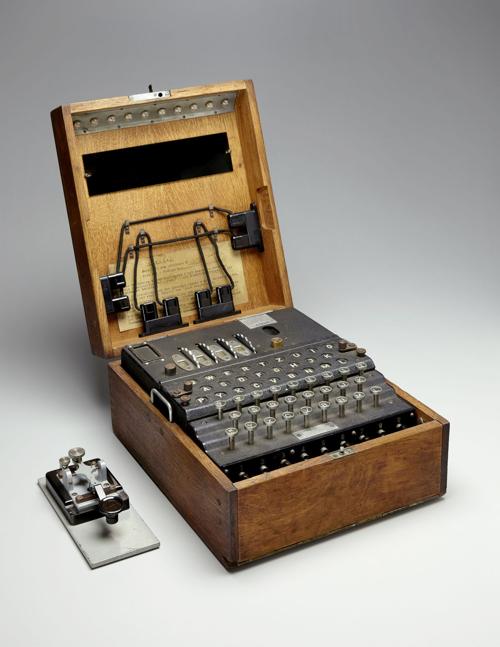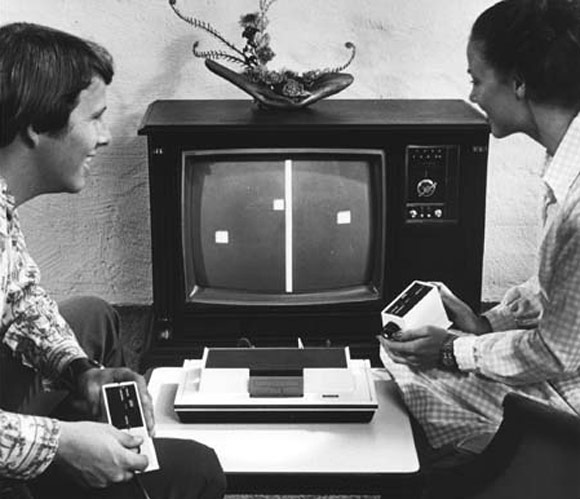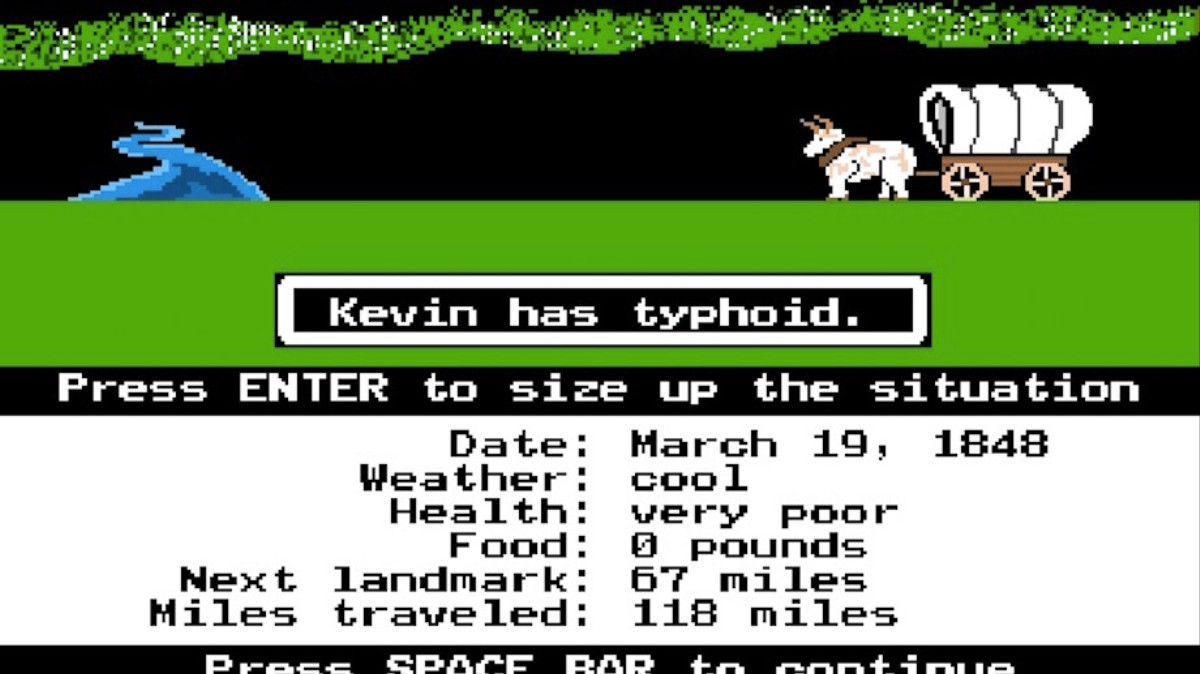German mathematician Gottfried Leibniz invents Binary, a language that uses just 0's and 1's. this language will be used later in computers.
| https://wallpaperplay.com/board/binary-code-wallpapers |
Hungarian Wolfgang von Kempelen builds a chess machine called "the Turk". The machine would have a mechanical figure that would "gaze" at the opponents move, ponder, then raise its arm and makes a move on its own. However it was an elaborate ruse as it was actually a human was inside the box pulling the levers. The machine lasted till 1854 as it was destroyed by fire.
 |
| https://interestingengineering.com/the-turk-fake-automaton-chess-player |
1804
Joseph Jacquard invented an automated steam powered weaving loom that was guided by a piece of cardboard containing rows of punched holes. the holes in certain positions programmed the machine to weave into a certain pattern. the cards, inspired by Binary code were a forerunner of the modern computer program.
1821
Charles Babbage designed two classes of engine, the difference engines and analytic engines.
Different engines (1821) are strictly calculators: they use arithmetical addition which removes the need for multiplication and division which are more difficult to implement mechanically.
Analytic Engines (1834) are a step up and for general purpose computation.
The engines were never built but inspired others.
1843
Ada Lovelace translated a published article on the Analytic Engine from the french and added extensive notes of her own. The notes included the first published descriptions of the stepwise sequence of operations for solving certain mathematical problems. It was considered the first computer algorithm.
1890
US census clerk named Herman Hollerith adapts both Babbage and Jacquard punch cards and adds the newly invented electricity. The punch cards contained census data was pressed down into a card. if a pin was pushed through the hole. it would complete an electric circuit and be logged. The invention was turned into a business which went on to become the computer company IBM.
1914-1920
Spanish inventor Leonardo Torres Y Quevedo constructs a two part electric chess- playing machine which has the ability to checkmate in a few moves from its human opponent.
1923
Arthur Scherbius who was a German engineer, designs the enigma machine to decipher secret code messages.
 |
| https://bloximages.chicago2.vip.townnews.com/tucson.com/content/tncms/assets/v3/editorial/a/8e/a8ee33c8-4f05-5cc0-90a4-f1003cdd2727/59001cda2784a.image.jpg?resize=500%2C647 |
1940
Edward U. Condon designs a computer for Westinghouse display at the worlds fair. The computer could play traditional games like "Nim" in which players try to avoid picking up the last matchstick. The computer would win 90% of the time.
1947
Thomas T.Goldsmith Jr. and Estle Ray Mann file a patient for a "cathode ray tube amusement device"
The game uses a cathode ray tube hooked to an oscilloscope display and challenges players to fire a gun at a target.
1948
Engineers find a war to store memory using electric charges instead of paper tape. 128 bytes of memory filled an entire room.
1950
Alan Turing published paper where he analysed what it meant for a human to follow a definite method or procedure to perform a task. he Invented the idea of a 'universal machine'
In 1946 he produced a detailed design for the automated Computing Engine (ACE) which could store programs in its memory. In 1950's Turing returned to his theme of a investigation how the power of the computer could rival human thought. His 'Imitation Game'. Now called the Turing Test, remains his best known work and was a key contribution to field of Artificial Intelligence.
1951
"Baby' Became the prototype for the first general purpose electronic computer to be sold commercially - the Ferranti Mark 1.
1952
A.S Douglas creates OXO (Tic Tac Toe) on an electronic delay storage automatic caculator
1954
The first Blackjack program on an IBM 701 computer is developed in New Mexico.
1955
US military designs Hutspiel which Red and Blue players (representing NATO and USSR commanders) wage war as part of their war gaming exercises.
First apperance of the "hack" or "hacking"
1956
IBM-701 can now play checkers, 6 years later the program defeats a checkers master.
1957
IBM-704 can now play chess, the program is advanced enough to evaluated four and a half moves ahead.
1958
Willy Higinbotham creates Tennis for Two on an Oscilloscope and analogue computer for public demonstration at brook-haven National Laboratory. This anticipated later video games such as pong.
:max_bytes(150000):strip_icc()/Pong.svg-58ae72833df78c345ba1e34e.png) |
| https://www.lifewire.com/pong-the-first-video-game-megahit-729739 |
1959
Students at MIT create Mouse in the maze on MIT's TX-0 computer. users first draw a maze with a light pen then a mouse navigates the labyrinth searching for cheese.
1960
The first known baseball computer program on an IBM 1620 is made.
1961
Ratheon develops a computer simulation of a global cold war conflict for the US joint chiefs of staff.
Three Massachusetts Institute of Technology, programmers were give the chance to experiment with the unusually small PDP-1 (size of two refridgerators). They came up with Spacewar! coincided by amny to be the first true video game. True player verse each other, trying to shoot each other out of the sky while moving around a star. I got a chance to play this game in class, and it did seem pretty fun. Even though there is limited controls to the game it still is quite difficult to maneuver.
https://www.masswerk.at/spacewar/index.html
:max_bytes(150000):strip_icc()/Spacewar_screenshot-5954c1c35f9b5815d91a10ec.jpg) |
| https://www.thoughtco.com/history-of-spacewar-1992412 |
1963
Months after the Cuban Missile Crisis, The US defence Department made a Simulation of Total Atomic Global Exchange or STAGE for short. STAGE "shoes" that the US would Defeat the USSR in thermonuclear war.
1964
Dartmouth Univercity's John Kemeny and Keith Bellairs create computer time-share system and BASIC programming language. Both made it easier for students to write computer games.
1965
Dartmouth student programs first computer football game.
1966
German Ralph Baer, who had originally joined Saunders Associates building airborne radar components wanted to change TV form a one-way box to something you interacted with.
1967
"The Brown Box" video game prototype lets user plays tennis and other games, The box was patented by Baer in 1968. In 1972 Magnavox became first video game licencee to sell home video game console.
 |
| https://2warpstoneptune.files.wordpress.com/2012/10/magnavox-odyssey.jpg |
1971
Minnesota college students Don Rawitsche, Bill Heinmann, and Paul Dillenberger create 'Oregon trail' a simulation of pioneers' westward trek, originally played on a single teletype machine. Minnesota Education Computer Consortium would later distribute the game nationally.
 |
| https://www.vice.com/en_us/article/qkx8vw/the-forgotten-history-of-the-oregon-trail-as-told-by-its-creators |
No comments:
Post a Comment